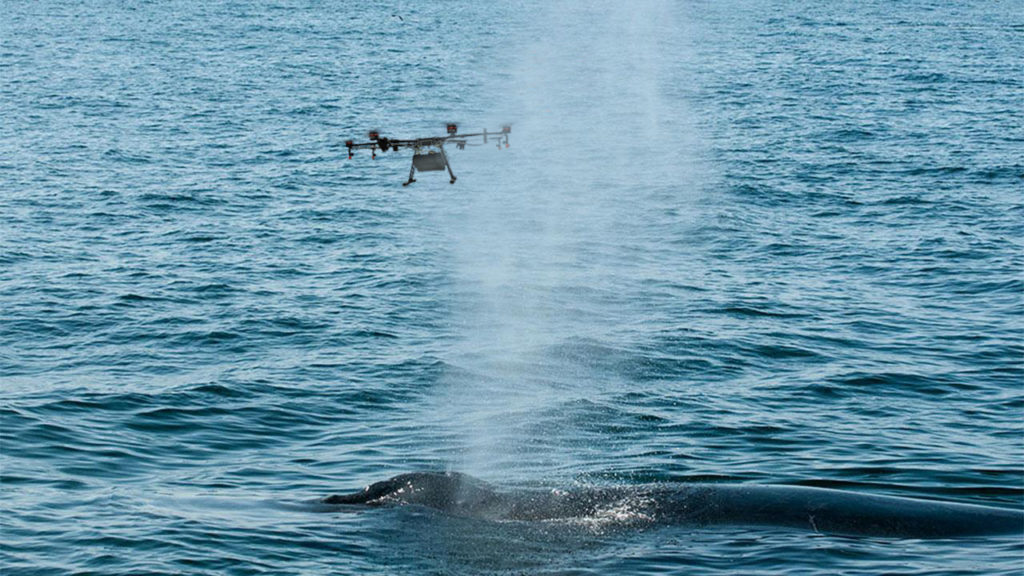Scientists have been working to determine the effects of the 2010 Deepwater Horizon oil spill on whales in the Gulf of Mexico. Traditionally this work has been done using large research vessels to collect biological samples from whales using small biopsy darts. This method is both cumbersome and requires scientists to disturb the whales to collect data. Drones are now helping avoid these problems by enabling scientists to collect data without actually interacting with or disturbing whales.
Using SnotBot for Data Collection
Researchers have developed SnotBot, a small drone that flies into the exhalation of a whale and collects its exhaled breath condensate. This allows researchers to gauge a whale's health in a noninvasive way.
Speaking in a recent article in Rotor Drone Pro, Dr. Iain Kerr, developer of SnotBot, said initially he was told using a drone to collect whale blow was a silly idea. "The whale exhalation goes up, and the drone's rotor wash blows down. Surely, the downdraft would blow the snot away. I was enamored, though, by the speed and flexibility of the drone platform and the amount of ground that we could cover with a machine that flies at 40 mph as opposed to the 8 mph of a boat, so I pushed on." Early SnotBot versions used long poles hung underneath them with collection dishes attached. “But we noted, during this experimentation phase with our blow simulator SnotShot, that we seem to be collecting a lot of blow on the top of the drone. We realized that a typical whale blow arches backward and that if you fly through and under the curve of the arch, the downdraft sucks the snot onto the petri dishes. The downdraft that started as a problem was now part of the solution." Today, Dr. Kerr says they have collected more than 1,000 snot samples from six species of whales.
Leveraging Waterproof Drones and Temperature Sensing Drones
Two companions to SnotBot are EarBot and FLIRBot. EarBot is a waterproof drone carrying a hydrophone package that lands in the water and records whale vocalizations. Currently, vocalizations are collected from boats, but boats make noise. And getting close enough disturbs the whales. EarBot lands on the water, shut off its motors, and records the vocalizations without disturbing either the whales or the process of collecting the vocalizations.
FLIRBot is a temperature sensing drone that uses FLIR to look deep inside a whale blowhole to record the animal's body temperature using FLIR tools. Body temperature is a key indicator that alerts researchers to disease. Before FLIRBot, no one had taken the temperature of a whale in the wild. With FLIRBot researchers can do so.
Such creative use of drones and readily available payloads has given researchers a novel, noninvasive way to study whales and their health. Given that approximately 71% of the Earth is covered with water, the uses for drones in marine research are limited only by our imagination.
We'd love to help you with all of your ROV financing questions.
STAY IN THE LOOP!
Keep up to date on all the latest news and activities in the ROV industry and at AeroV Financial.


